| Author | Comment | |
|
1. 14 Jan 2009 14:14 |
|
|
karmachameleon
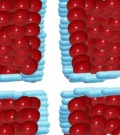 |
Could you look at my drawings and give me some tips?
|
|
2. 14 Jan 2009 15:44 |
|
|
Login
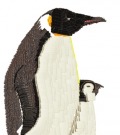 |
Welcome to ThinkDraw, karmachameleon.
I am no expert and could not begin to advise you on how to draw. All I can say is that browsing through the Gallery and clicking on those that stand out from the rest, looking at how they were created, has inspired me to move on from placing grapes on the red plate and sticking features on the 'faces'. As I browsed and analysed other peoples drawings, I learned from the more talented participants.
You will find that the more you browse, the more ideas you get. Good luck.
|
|
3. 14 Jan 2009 16:12 |
|
|
matthew
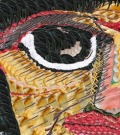 |
Karma,
Think draw did a page of my drawings in which I explained my layering techniques... http://www.thinkdraw.com/howToDraw.php ..... That will give you an Idea of how to layer & how to plan the order of your layers... From there I agree with Login... I often will look at other pics and try to figure out how they made a certain effect & will try to duplicate it myself to use in a future pic of my own... Do not be afraid to leave a comment on someones pic asking what they did to make something that you cant figure out on your own... Nobody here is out to keep secrets & when someone learns from one of my pics I am personally flattered... When all else fails... just play around... personal enjoyment is what you should be looking for...
|
|
4. 15 Jan 2009 02:32 |
|
|
marg
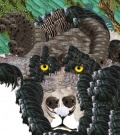 |
fow what it's worth (not a lot !).. I reckon you're an artist with a great eye for colours, shapes, etc.. just haven't got the 'expert' skills for ThinkDraw (TD) yet !
None of us had those when we started, but jeez, you learn ! .. and it costs lots of hours & messing about. Can't say I learnt much technique from other people on TD until I'd already worked out how to do something, and then I suddenly realised how good someone else's pic was. Other peoples pictures can be really inspirational, not in terms of trying to duplicate them, but because they send you off in different directions that you hadn't considered before.
I echo everything else matthew and Login said, especially the 'Good luck'.. but most of all, have fun (and try and only play at weekends !)
|
|
5. 15 Jan 2009 10:06 |
|
|
anotherronism
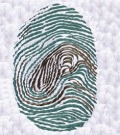 |
karmachameleon:
I just browsed your pics. You don't need tips. They're great.
"World's Ugliest Prom Dress" is hilarious and good.
One tip I'd offer though: You don't seem to have discovered the Plus and Minus buttons. Use scale in your layering. I breaks things up and gives you much finer detail and allows for interesting perspective tricks.
Also consider not just adding stuff but taking it away: For instance. I'm in Animals and I want a fine black line. There isn't one. So I use the crows plumage (black) or the dogs nose (nearly black) and lay down one side of my line. Then I come back and use the cows forehead or parts of the dog to add white back over the black leaving just the thin line I want. You have to really practice this as it only works sometimes either inside an area or out. Nothing worse than spending an hour on a picture and realize the only way to erase that booger hanging off the side of it is to put a cow's forehead out on the background.
Practice, practice, practice.
Oh and - STEAL ideas! Seriously. Imitation is the best form of flattery.
And I don't mean to just steal methods - steal the actual picture. Try to reproduce other stuff you see (credit the original of course). That way you can work on craft and any "art" can come later.
Welcome aboard,
Ron (another newbie [though not in hours - just days...])
(grin)
|
|
6. 15 Jan 2009 10:32 |
|
|
anotherronism
 |
One more thing.
If you play around with the different shapes you'll find they work differently in different directions (tiling left or up or diagnol vs. down or right).
Some edges have an anti-aliased edge and some end in a hard color. The anti-aliased (technical term - sorry) images will show the edge in tiling while the others blend much better.
Also - the cow forehead has a nice round right side and bottom but has an abrupt corner on the lower-left. Using it to tile up and left leaves a jagged line due to that sharp corner.
So play around. Many of my images have been the result of just tiling around and noticing something interesting then pursuing it.
Good luck.
Ron
|
|
7. 15 Jan 2009 11:08 |
|
|
puzzler
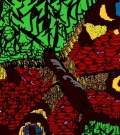 |
Hi Karma. Part of the skill is choosing the right scheme to match your subject and it looks as though you are doing that well with your sunrise and promdress. Not all of our pics are works of art, so it's important to have fun and put real effort into one or two. Google a pic you like, print it and then choose the scheme which will enable you to interpret it in the easiest way. This might be governed by colour or certain shapes you need, or even a background. Then away you go! Remember we all have failures - hurray for the delete button!
|
|
8. 26 Jan 2009 13:19 |
|
|
grahame
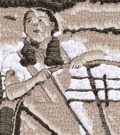 |
Hi Karma,
TD is, first and foremost, all about having fun and your pictures are already great.
If you want to make more complex pictures then you have to use layers and sizing to achieve the result you want. Sometimes this means spotting that you need to start with something tiny (such as a white piece for the twinkle in someones eye) and build up the other colours and shades in the reverse order to achieve the final result. Unfortunately this can sometimes cover up other elements that you have already done so you really need to plan your drawings and anticipate what needs doing in what order.
Also, have a play with placing all the different elements over each other with a slight offset so that only small parts of the bottom element are revealed. You'll often find that subtle shading, noses, eye sockets etc. will magically appear. This is just like real painting, where artists make the most of 'happy accidents' and incorporate them into their work.
Initially I would suggest you pick a image you like on the internet and size the window to about the same as the TD pane, then open TD and size its window next to the first one so you can see all of the elements and sizing controls and then try to copy some or all of the photograph.
Start with something simple like a cartoon that has only a few colours and no shading. You'll be amazed how quickly you can produce a good copy, especially if you keep the proportions accurate.
Copying a photograph of a real person or scene is only a more complicated version of this and you'll soon start seeing subtle shading and colours. It might help if you think of the TD elements as a stroke of paint from a brush, one on top of another.
|
|
9. 27 Jan 2009 01:12 |
|
|
awsomeness
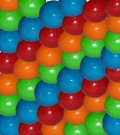 |
i think ur pic of a prom dress #2 is good even i would wear it to prom!
|
|
10. 16 Mar 2009 17:21 |
|
|
Login
 |
Where did you go, Karma? Your last drawing was on 30 January 09. Did all this good advice scare you off? I hope not ... perhaps you're practising and you're going to surprise us one day, very soon.
|
